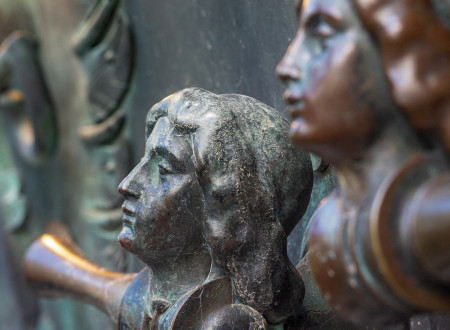Pioneers of Slovenian Modern Architecture – Fabiani, Plečnik and Vurnik – Forms for a New Democracy
About the Exhibition
There is no culture without people and no architecture without culture. Both reflect the face of society, within which architecture most noticeably reflects the spirit of community and time. Plečnik, Fabiani and Vurnik were aware that spaces as well as forms can open future possibilities, enable new visions and provide different perspectives. If we summarise the thoughts of all three architects, we can extract the basic message that the democracy of society begins with an idea, finds its embodiment in architecture, lives with the development of society and continues with the preservation of heritage. Well-designed, high-quality and balanced architecture is an invaluable legacy that makes people aware of the importance of protection of the cultural and natural landscape. It heightens an awareness of the uniqueness of the building tradition, which enriches us with its message of forms and testifies to a thousand-year tradition of forming the European identity.
The intertwining of traditions of profane and sacral architectures of Central and wider Europe from antiquity to the present day has created various elements of urban and natural habitat formation which in the third millennium have become the basis for sustainable urbanism, economy and environmental protection. Democratically designed architecture and its forms increase quality of life, raise awareness of the importance of social balance and sustainable development, enlighten and contribute to a better understanding of European society and culture.
Forms for a new democracy is based on the idea that architecture helps create our identity, shaping the underlying character of society and the messages it conveys. At a symbolic level the term is also committed both to Tomáš G. Masaryk’s vision of a new democracy (democratisation and greater social cohesion) and the European democracy of the present time. Plečnik, who had been invited by Masaryk to renovate the once royal Hradčany Castle and transform it into a new Slavic, democratically designed presidential residence, was deeply influenced by the idea of emphasising the importance of small nations within the wider European arena, as was Vurnik. The influence of the pan-Slavic movement, with its goal of achieving a broad, democratic, national polity, can be clearly seen.
Through his lavish visual language, Plečnik was able to combine the heritage of the ancient cultures, the Classical period, Central European tradition and Slovenian cultural practices. Over time, Fabiani deliberately distanced himself from histori(ci)sm and tended towards seeking a more modern architectural language, while Vurnik consciously set out to create a Slovenian national style.
What all three had in common, however, is that they all strived for democratically arranged spaces and the best architectural and urban solutions. In this way, forms are integrated with democracy, creating a sustainable architectural heritage.


































































































































































































